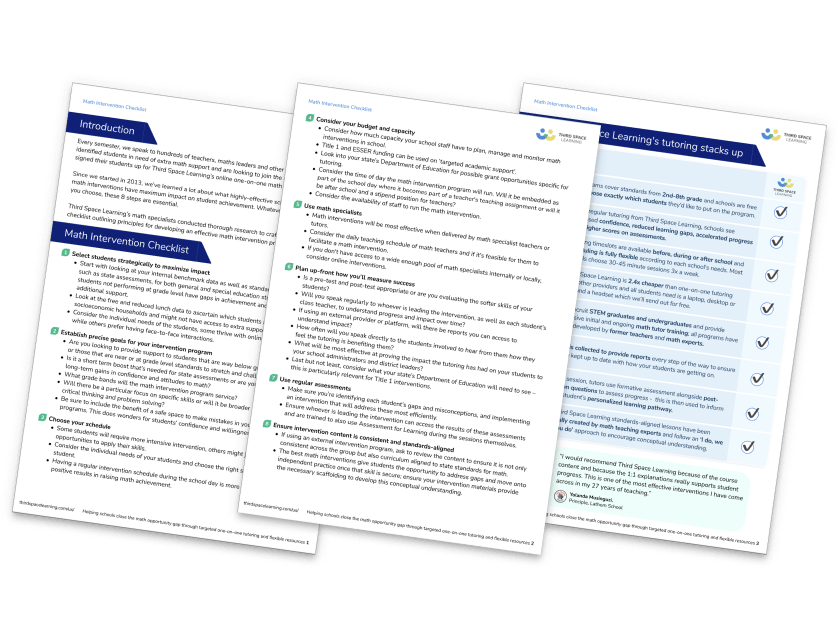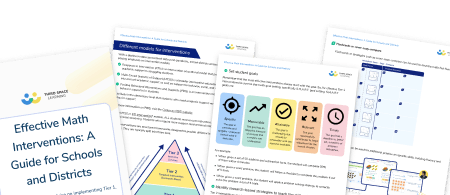What Are MTSS Interventions And How Can You Implement Them Successfully?
MTSS interventions, otherwise known as Multi-Tiered Systems of Supports, aim to support student success and provide all students with the help they need from elementary school to high school.
This article explores how to deliver MTSS interventions through small group or one-on-one instruction to support students in your school.
What are MTSS interventions?
MTSS interventions are a system of supports for students across any school or district. MTSS is a whole-child approach. It considers academics, social-emotional learning, and behavioral needs.
A multi-tiered system of supports is broken into three tiers. Each tier provides a different level of support for individual students. Interventions become more intensive and personalized as students move through the levels of support.
Effective Math Interventions: A Guide for Schools and Districts
A guide for school leaders to implementing successful Tier 1, Tier 2, and Tier 3 math interventions, with detailed recommendations and examples for each tier
Download Free Now!The core components of MTSS are:
- Data driven decision making
- Universal screening
- Progress monitoring
- High-quality Tier 1 instruction
- Evidence-based interventions in Tiers 2 and 3
- Collaboration between educationists, district leaders and parents
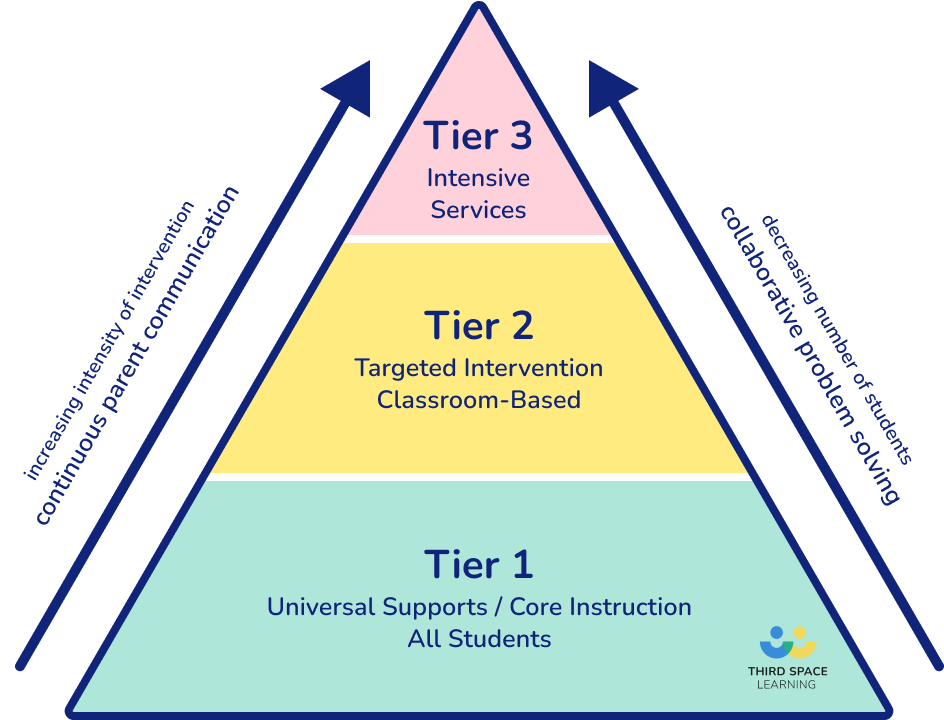
Research Support for the MTSS Framework
While there is a growing body of research to support the use of an MTSS framework in schools to address academic and behavioral challenges, schools are more likely to adopt the approach in English, for reading, than math. Studies found the benefits of MTSS interventions were most consistent when the core components were implemented with fidelity.
Core MTSS Components
1. Data-Driven Decision Making
Schools should use data to drive decision-making about which students receive MTSS interventions. Teachers analyze academic data to make decisions about which students require interventions and the type of interventions to provide. Data comes from:
- Universal screeners
- Progress monitoring tools
- Behavior data including school referrals
2. Universal Screening
Universal screening provides assessments for every student in the school to help identify students who are not mastering skills or progressing at the expected grade level rate. These assessments can be curriculum-based assessments or standardized tests.
3. Progress Monitoring
Teachers carry our progress monitoring for students who recieve intervention. Progress monitoring, or quick assessment tools provide information about whether a student is mastering the taught skills. This helps teachers understand if an intervention is working. Ongoing data collection and analysis indicate which interventions are effective for individual students.
4. Tier 1: High-Quality Classroom Instruction
Tier 1 is whole class core instruction, including:
- Academics
- Social-emotional learning
- Behavior systems
High-quality Tier 1 instruction should mean that a minimum of 80% of students demonstrate academic progress and follow behavior expectations.
For example, a school implements Positive Behavior Interventions and Support or PBIS. When 80% of students demonstrate expected behaviors, the school team can be confident that PBIS is working as a Tier 1 behavior program.
If less than 80% of students demonstrate expected behaviors, the school may focus first on improving Tier 1 instruction before expanding Tier 2 interventions.
5. Tiers 2 and 3: Evidence-Based Interventions
If a student requires Tier 2 or Tier 3 intervention, the teacher or interventionist must identify an intervention strategy or program to address the need.
Before an intervention is implemented, an intervention plan is developed, this outlines the intervention, length, and intended progress monitoring.
Intervention intensity is the key difference between Tier 2 and 3 interventions. For example, a Tier 2 intervention may be in a small group, three days a week for 20 minutes while a Tier 2 intervention is one-on-one and occurs daily.
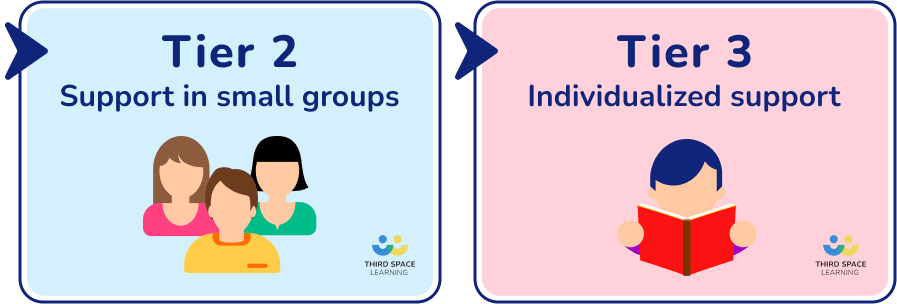
Math example
Teachers identify a student is not making progress solving word problems using math operations. They draft an intervention plan to provide support for a small group of students three times a week.
In the small group, the student receives instruction for a problem-solving strategy. After six weeks, if the student has not demonstrated an increased ability to solve math problems, the teachers may decide to provide Tier 3 intervention.
The student will then work with the interventionist daily using a different problem-solving approach to gauge how the student responds to additional support.
6. Collaboration
MTSS tiers of support are designed to identify and support struggling students early. These supports are more successful when they are collaborative.
School leaders and teachers work together to make decisions to differentiate and meet student needs. Parents should be involved from the start and understand the support their child receives.
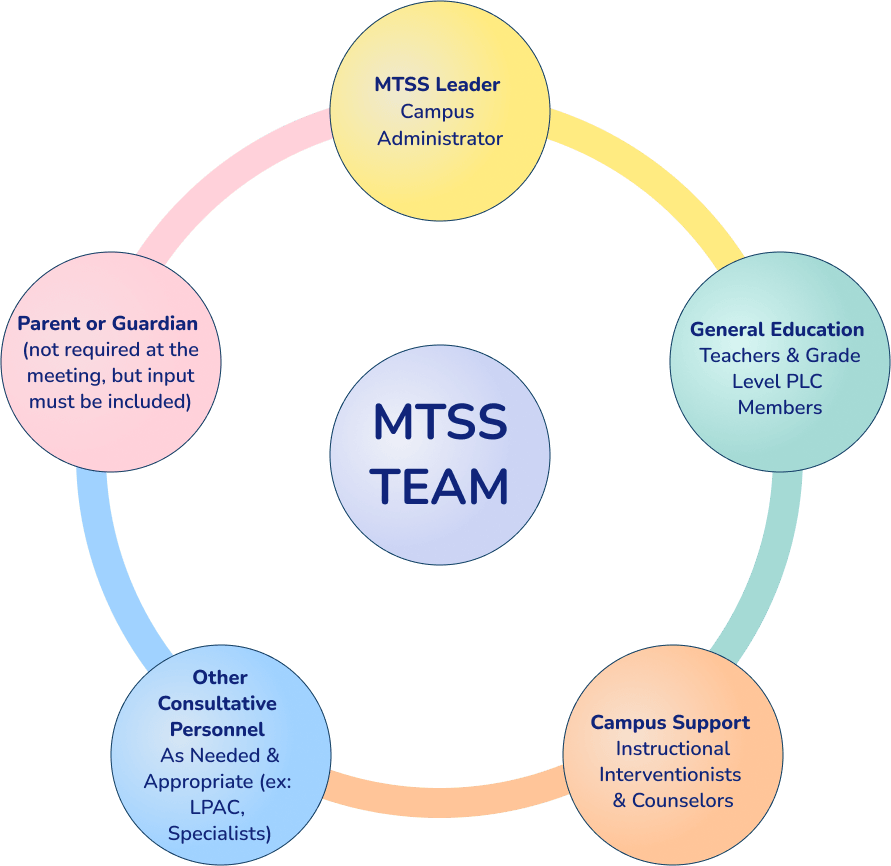
What are the Benefits of MTSS Interventions?
MTSS interventions are designed to benefit the student’s academic, social and behavioral outcomes.
The benefits of MTSS include:
- Better academic outcomes for all students
- Improved instruction and curriculum alignment across the school, including general and special education
- Higher standards for school climate
- Safe learning environments
- Supports students’ behavior
- Effective response to discipline

Meet Skye, the voice-based AI tutor making math success possible for every student.
Built by teachers and math experts, Skye uses the same pedagogy, curriculum and lesson structure as our traditional tutoring.
But, with more flexibility and a low cost, schools can scale online math tutoring to support every student who needs it.
Find out moreMTSS vs. RTI
Response to Intervention (RTI) and MTSS both provide a tiered approach to supporting students. However, RTI takes a more narrow approach than MTSS.
RTI focuses on solely academics while MTSS is more holistic and focuses on academic, social-emotional learning (SEL), and behavior supports.
| MTSS | RTI |
| • Multi-tiered approach • Addresses academics • Uses universal screening to identify students • Provides frequent progress monitoring • Uses data-driven decision making • Involves collaborative problem solving • Addresses the whole child (academics and behavior) • Involves all school stakeholders including families • Encompasses PBIS • Emphasizes differentiated core instruction and professional development for educators | • Multi-tiered approach • Addresses academics • Uses universal screening to identify students • Provides frequent progress monitoring • Uses data-driven decision making • Involves collaborative problem solving |
MTSS implementation
When implemented with commitment, an MTSS framework is a powerful tool to improve learning for all students in a school.
Building a collaborative, effective MTSS model helps ensure students are identified before they struggle, and receive support to address learning, social-emotional, and behavior needs.
9 Principles for Successful MTSS Intervention
For MTSS to be successful, it must focus on all of the elements. Here are nine principles for successful implementation.
1. MTSS is for every student
The MTSS framework is a schoolwide approach as every student is accounted for in MTSS, even if they are in Tier 1.
School leaders must review data to ensure that 80% of students are making progress and that Tier 1 instruction and supports are effective.
2. Strong leadership
School leaders must provide professional development for MTSS and any interventions teachers are responsible for.
As part of their role, school leaders should provide collaborative time for teachers to meet to review and discuss data. This is essential to help identify effective interventions and those that need to be stopped or changed.
3. Establish an approach
Schools can choose one of two approaches to MTSS.
- A program approach
- A strategy approach
Within a program approach, each student who receives interventions will receive the same dedicated program. For example, schools with a math curriculum that has a Tier 2 intervention program may use that program to administer all group interventions within a grade level.
Whereas a strategy approach individualizes interventions for each student based on their specific needs. A school that uses a strategy approach, will identify students who are struggling with a specific skill and provide an intervention strategies that target that skill.
4. Intervention plans
Comprehensive intervention plans should clearly outline the goals and interventions for each student. Goals should be SMART and clearly define progress monitoring strategies and the rate of expected progress. Each goal should apply to the duration of an intervention, typically six to eight weeks.
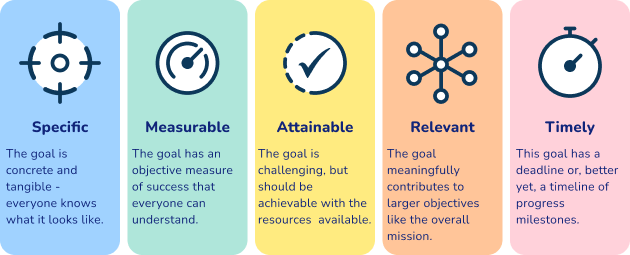
5. Evidence-based intervention
Strong MTSS models are based on research-based interventions. These interventions have strong research support and connect the use of the intervention with student outcomes. Teachers should discuss the effectiveness of interventions. If interventions are not effective, they should be evaluated and replaced. Attention should be given to improving the implementation.
6. Effective progress monitoring
Once students receive interventions, it is important to monitor progress so teachers can make the appropriate decisions to continue or change an intervention to one that is more intensive or uses a different approach.
For example, a teacher may review a student’s progress with fact fluency using a flashcard strategy. Then, based on progress, they can decide whether to switch to another strategy because the student is not making the progress necessary to advance to Tier 1.
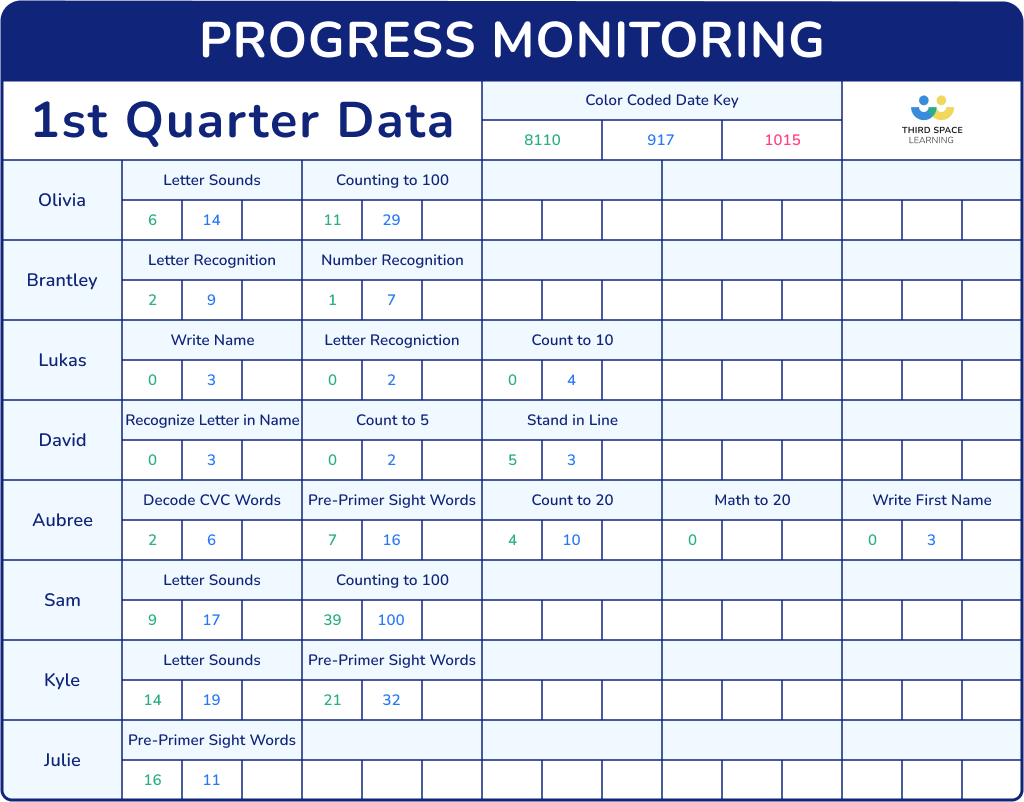
Progress monitoring can employ various tools, including:
- Teacher created probes
- Standardized tests like DIBEL
- Curriculum-based measures
Progress monitoring should not take more than 15 minutes to administer and can be part of the intervention. Tasks may include independent practice tasks and graphing the results during the length of the intervention.
7. Data-based decision making
Data collected through MTSS is used to make decisions for students, including whether to move them into or out of intervention. Intervention data can also help to decide whether to refer a student for a special education evaluation.
8. Prioritize meeting time
Set meeting times allow teachers to review data and determine the next steps each week or every two weeks during the school year.
School teams should include:
- The general classroom teacher
- Interventionists
- School leadership
9. Regularly review MTSS practices
MTSS should be a fluid process where students move in and out of tiers as they make progress or are moved into higher levels of supports.
Just as teachers review student data, they should review information about whether or not MTSS is working for students.
MTSS and Special Education
The MTSS framework is also a tool to support and identify students who may have learning disabilities. As students receive more intensive interventions, teachers learn about the student’s gaps in learning, and how the student learns.
Teachers and parents review the data to determine whether the student requires additional support to access the general education curriculum. They may refer the student for a special education evaluation that can provide additional information about a student’s learning profile.
Students diagnosed with a learning disability using data from their time in Tiers 2 and 3 can help inform their Individualized Education Plan or IEP.
MTSS and ESSA
An MTSS model is one way that school teams can support students under federal law. The Every Student Succeeds Act (ESSA), focuses on expanding and strengthening the use of tiered support to address equity in education.
ESSA provides flexibility for states and school districts to identify the types of practices and models used to support students, including through tiers of support.
Schools can use ESSER and Title 1 funding to contribute towards the cost of Third Space Learning’s online one-on-one math tutoring. Highly trained STEM specialist AI tutor Skye uses effective math intervention strategies to provide personalized math interventions.
Third Space Learning is 2.4 x more affordable than the average cost of one-on-one tutoring.
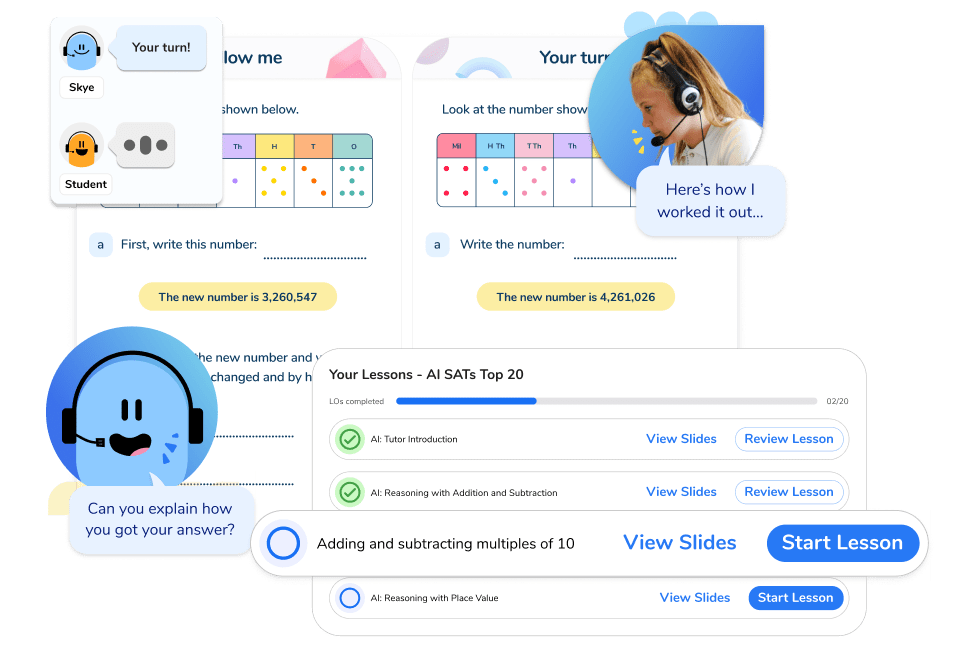
FAQs
An MTSS intervention is small group or individual instruction provided within a system that provides support to students based on their needs. MTSS uses a combination of universal screening, progress monitoring, and evidence-based interventions to support all students. An MTSS intervention can address academic, social-emotional, or behavior skills.
Tier 2 interventions are research-based and focused on teaching a core skill. For example, Cover-Copy-Compare is a research-based intervention for math fact fluency. And, Check In Check Out is a research-based intervention to support students with work habits and behavior.
Tier 3 intervention is provided when Tier 2 interventions have not been effective or have not produced the anticipated results. Tier 3 interventions may be delivered one-on-one or in a very small group of students. A Tier 2 intervention may be a small group that focuses on improving fact fluency. A Tier 3 intervention might be a one-on-one practice every day.
Do you have students who need extra support in math?
Skye—our AI math tutor built by experienced teachers—provides students with personalized one-on-one, spoken instruction that helps them master concepts, close skill gaps, and gain confidence.
Since 2013, we’ve delivered over 2 million hours of math lessons to more than 170,000 students, guiding them toward higher math achievement.
Discover how our AI math tutoring can boost student success, or see how our math programs can support your school’s goals:
– 3rd grade tutoring
– 4th grade tutoring
– 5th grade tutoring
– 6th grade tutoring
– 7th grade tutoring
– 8th grade tutoring
